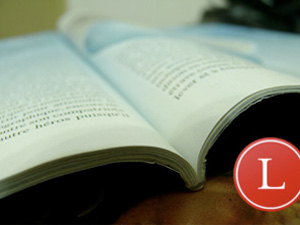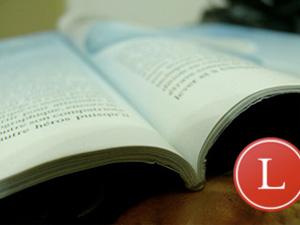
Mother Jones guest blogger Mark Armstrong is the founder of Longreads, a site devoted to uncovering the best long-form nonfiction articles available online. And what better time to curl up with a great read than over the weekend? Below, a hand-picked bouquet of five interesting stories, including word count and approximate reading time. (Readers can also subscribe to The Top 5 Longreads of the Week by clicking here.)
1. How Slavery Really Ended in America | Adam Goodheart | New York Times Magazine | April 1, 2011 | 18 minutes (4,486 words)
How Union Maj. Gen. Benjamin Franklin Butler (and some changes in language) helped set the stage for Lincoln’s unveiling of the Emancipation Proclamation. In a meeting on horseback with Confederate Maj. John Baytop Cary, Butler refused Cary’s request to return three young black men who had fled to Union-held Fort Monroe, Va.:
“[Cary:] ‘Do you mean, then, to set aside your constitutional obligation to return them?’
“‘I mean to take Virginia at her word,’ Butler said. ‘I am under no constitutional obligations to a foreign country, which Virginia now claims to be.’
“‘But you say we cannot secede,’ Cary retorted, ‘and so you cannot consistently detain the Negroes.’
“‘But you say you have seceded,’ Butler said, ‘so you cannot consistently claim them. I shall hold these Negroes as contraband of war, since they are engaged in the construction of your battery and are claimed as your property.'”
More NYT: “The Fragile Success of School Reform in the Bronx” (Jonathan Mahler, April 6, 2011)
2. Can Rob Kalin Scale Etsy? | Max Chafkin | Inc. | April 6, 2011 | 16 minutes (4,085 words)
The online marketplace helps launch thousands of small businesses selling handcrafted goods—but can any of them survive? The Etsy founder grapples with the difficulty in making DIY profitable:
“Etsy requires that all new products listed on the site be made by the people selling them—the use of mass production, that wonderful innovation of modern capitalism, is verboten. ‘Etsy has made it possible for a lot of small businesses to get off the ground,’ says Dale Dougherty, co-founder of O’Reilly Media and the publisher of Make magazine, which covers the do-it-yourself economy. ‘But even the most successful crafters run up against the limits of their own labor. Handmade can be a limited idea.’ In other words, the very qualities that make Etsy so attractive to new sellers put the most successful Etsy sellers in an awkward position: They must stay small or abandon Etsy.”
More from Chafkin: “Paul Graham: The Startup Guru” (June 2009)
3. Inside David Foster Wallace’s Private Self-Help Library | Maria Bustillos | The Awl | April 5, 2011 | 38 minutes (9,439 words)
A literary field trip to the Ransom Center at the University of Texas at Austin—where Bustillos examines Wallace’s collection of self-help books, notes to his teachers, and insights on addiction, depression and genius:
“One surprise was the number of popular self-help books in the collection, and the care and attention with which he read and reread them. I mean stuff of the best-sellingest, Oprah-level cheesiness and la-la reputation was to be found in Wallace’s library. Along with all the Wittgenstein, Husserl and Borges, he read John Bradshaw, Willard Beecher, Neil Fiore, Andrew Weil, M. Scott Peck and Alice Miller. Carefully.
“Much of Wallace’s work has to do with cutting himself back down to size, and in a larger sense, with the idea that cutting oneself back down to size is a good one, for anyone (q.v., the Kenyon College commencement speech, later published as This is Water). I left the Ransom Center wondering whether one of the most valuable parts of Wallace’s legacy might not be in persuading us to put John Bradshaw on the same level with Wittgenstein. And why not; both authors are human beings who set out to be of some use to their fellows. It can be argued, in fact, that getting rid of the whole idea of special gifts, of the exceptional, and of genius, is the most powerful current running through all of Wallace’s work.”
More from Bustillos: “Our Desperate, 250-Year-Long Search for a Gender-Neutral Pronoun” (Jan. 2011)
4. Where the Buffalo Roam | David Samuels | Mother Jones | April 4, 2011 | 21 minutes (5,326 words)
Questions about the future of humans and buffalo in Eastern Montana—and what it means to be a conservationist. As the local population in Great Plains counties decreases, groups are moving forward with plans to create a 3 million-acre grassland reserve and return the land to the bison. Bryce Christensen of the American Prairie Foundation has faced resistance from the locals:
“The Phillips County News had been particularly vociferous in its opposition to the project. Christensen mentions a series of cartoons that depicted the APF as skylarking weirdos whose idea of progress was to take the country back to the 1850s. ‘Circle up the wagons, folks,’ editorialized a staff writer assigned to the story. ‘We’re about to be overrun by a bunch of eastern based nature lovers herding buffalo onto our range.’ Christensen feels that the paper has let local passions get in the way of the facts. ‘I think the source of the fear,’ he says, ‘is that we are very open about our dreams of what this landscape will look like 25 years from now.'”
More Mother Jones: “For Us Surrender Is Out of the Question” (Mac McClelland, March 2010)
5. The Woman Who Smashed the Glass Ceiling | Corinna Honan | Daily Mail | April 2, 2011 | 9 minutes (2,344 words)
The story of Rachel Beer, who served as the first-ever female U.K. newspaper editor (The Sunday Times), before losing her husband and falling into a depression as her family sought to have her declared insane:
“So, in 1894, an era when female journalists were typically restricted to reporting on frocks, frills and social functions, Rachel Beer became the ‘editress’ of the Sunday Times. She decided that she wouldn’t support any political party, but that her paper would watch MPs’ squabbles ‘as an entomologist observes the contest of rival tribes of ants.’ Other innovations came thick and fast: a column from America, and regular interviews, often conducted by herself. In her first leader column, she commented on the Sino-Japanese war over control of Korea, touched upon the state of British colonies around the globe, focused on Russia and chided British politicians for their lack of charisma. Fleet Street was slack-jawed. Not only had a mere woman dared to write with conviction on weighty matters of state, but she’d done so with wit and vigor—as though she’d been writing editorials for years.”
More Daily Mail: “Stephen Hawking: How to Build a Time Machine” (May 2010)
 Featured Longreader: Aileen Gallagher @aegallagher
Featured Longreader: Aileen Gallagher @aegallagher
Aileen is an assistant professor of multiplatform journalism at Syracuse University
“I had the good fortune of reading a lot of great pieces this week, but my favorite longread is Newsweek’s (!) ‘Citizen Kate’ by Allison Pearson. There were heavy and plentiful options, but ‘Citizen Kate’ was the reading equivalent of a Dairy Queen Blizzard. It was delicious, bad for you, and flecked with crunchy bits of Tina Brown’s unmistakable editing.”
Citizen Kate | Allison Pearson | Newsweek | April 3, 2011 | 14 minutes (3,527 words)










